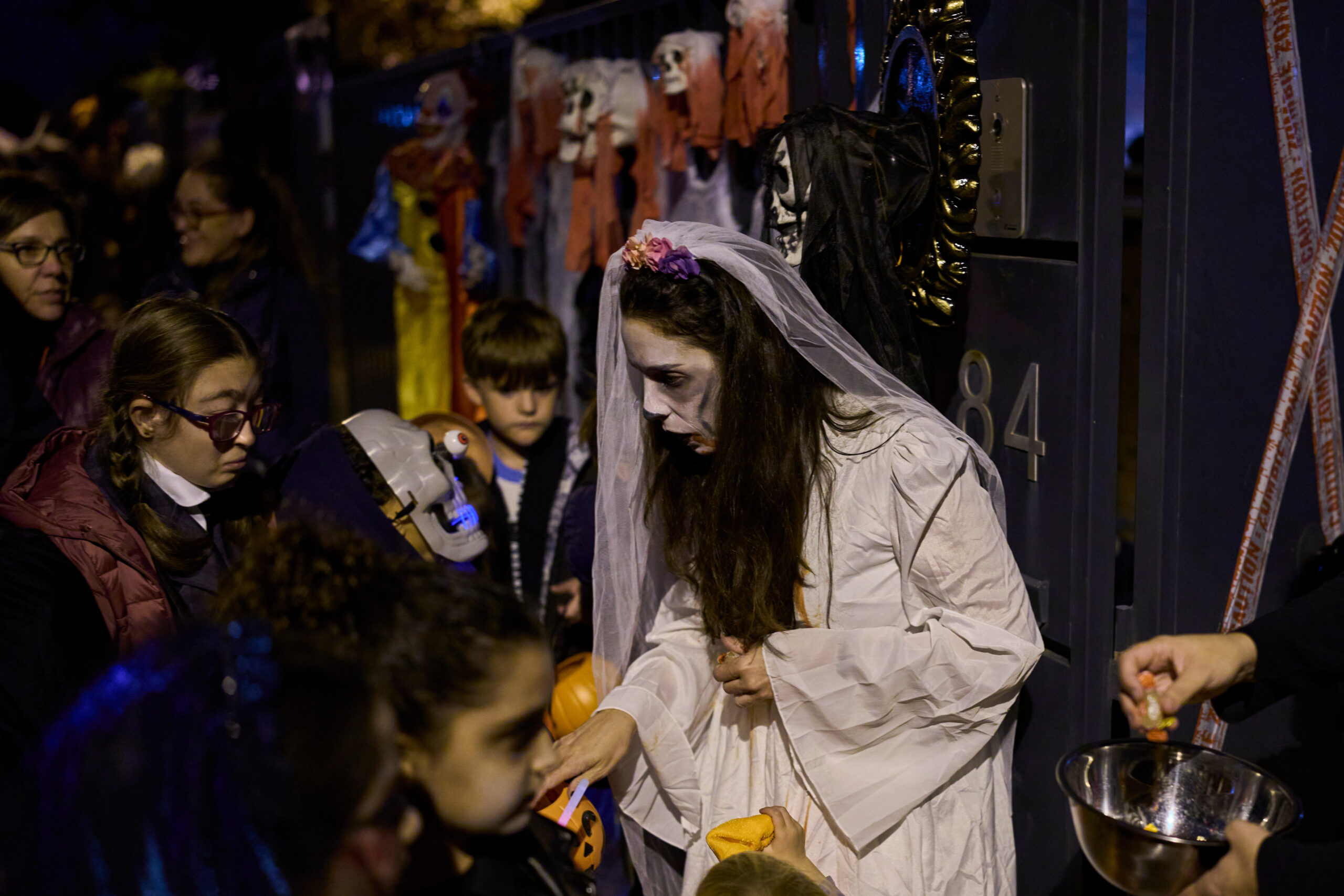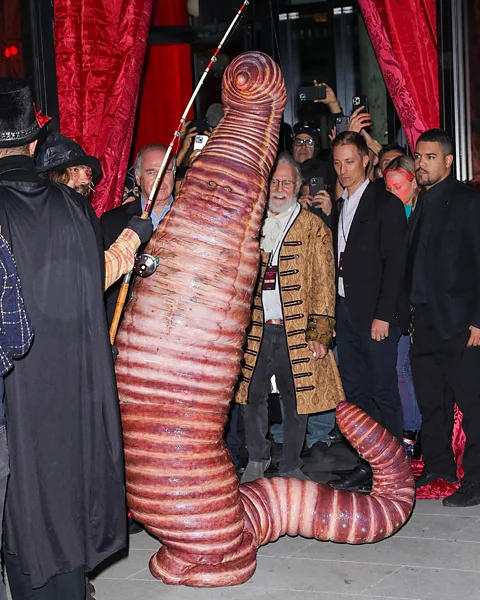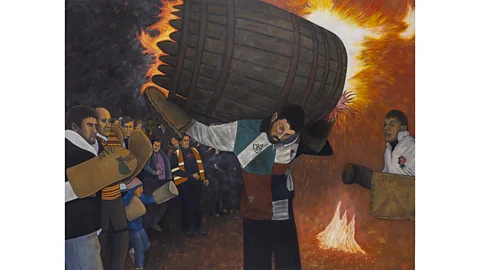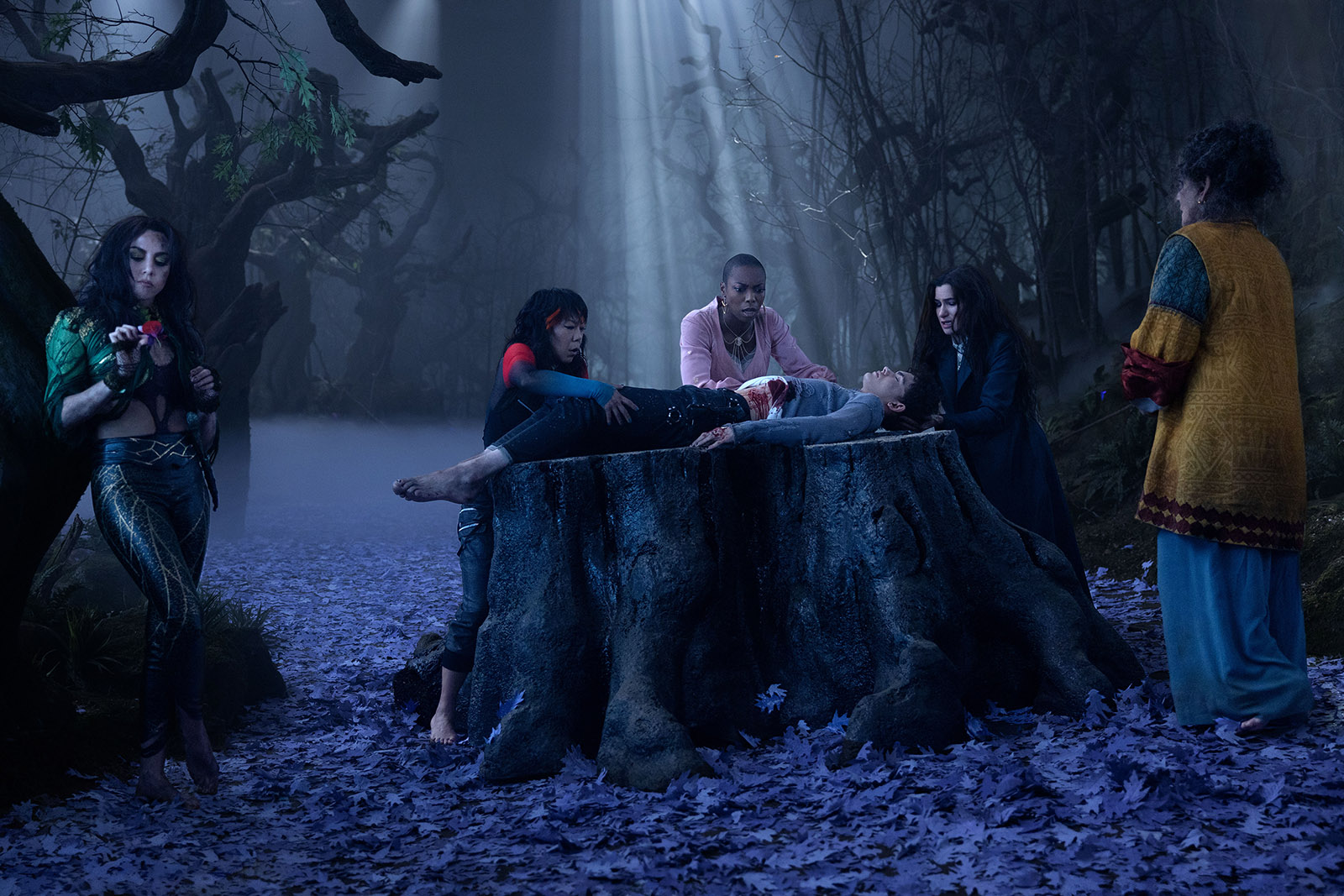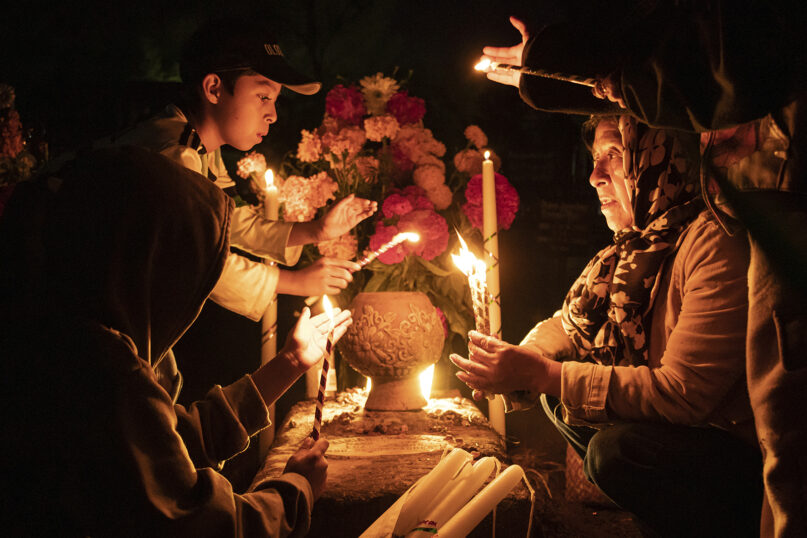A Samhain Message to an Embattled Trans Youth
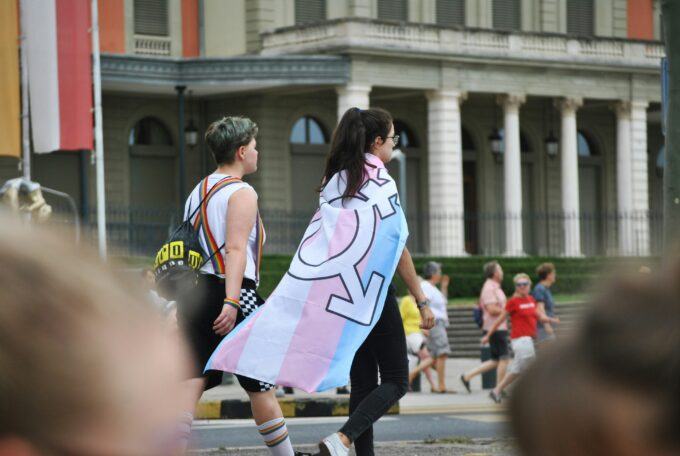
Image by Delia Giandeini.
Thousands of years ago, on the sacred rock from which my ancestors fled, this season of the year was celebrated as Samhain, an ancient Celtic festival marking the end of the summer harvest and the beginning of the darker months of the year. This was also a time of sacred upheaval and spiritual transformation, when the veil between the material world and the spirit world was thin, allowing lost spirits to return to earth and the normal roles of society to be inverted. At twilight, the craggy hills of the moors were alive with the glow of massive bonfires set by peasants embracing the darkness in drag.
Eventually, this became what is now known as Halloween and it is really little wonder considering those roots that what became known as Halloween became less commonly known among my people as “Queer Christmas.”
Chaos reigns, the young govern the streets after dark and social transgressions typically demonized are set free to be flaunted flamboyantly by the light of the moon. All of which is beautiful enough in its own right, but this season is so much more than that for a person like me who considers their gender identity to be an integral part of their spiritual journey.
I am a Celtic Christian Pagan who reveres the Virgin Mary as a representative of the Tripple Goddess found throughout ancient matriarchal societies. I also pray to the Morrigana, three sister goddesses of ancient Celtic lore typically associated with battle but also with transformation and necessary change.
While there exists little direct evidence of third genders in ancient Celtic society and little direct evidence of much else of these tribes in general, considering that this was one of many sacred oral traditions wiped out by the tyranny of the churches who used the cross as a weapon for conquest and homogeny, the surviving myths of Celtic heathenry are rife with the same narratives of spiritual gender fluidity that defined many neighboring pagan cultures where the history of revered third genders remains very tangible.
My own embrace of a gender identity that refused to be governed by the limitations of the material world triggered the unlocking of decades of repressed trauma at the hands of the Catholic Church, who replaced the Celtic Druids of my ancestral homeland, along with multiple identities representing the young girls these men failed to silence.
Since becoming a woman divided among five personalities, my relationship with Mary and the Morrigana has become quite direct. They speak to me in words too sacred for language and they have a lot to say about the times we live in. Much like the months of the year ushered in by Samhain, these are days of darkness. America’s carcinogenic roots of colonialism and white supremacy are strangling the few illusions of democracy that we once held dear. Soldiers stock the streets of America’s crumbling metropolises while genocide of all kinds has become an open part of public policy.
These forces of unconcealed darkness have decided to make a point of trying to police the young in particular. Those yet to be initiated into their cult of conformity and murder, especially today’s Queer youth who they never seem to stop writing laws against. Literally thousands of laws seeking to render the existence of young gender outlaws intolerable.
An estimated 40% of trans youth between the ages of 13 and 17 live in states with severe restrictions on healthcare that simply allows them to postpone puberty with fewer known side effects than antidepressants. Dozens of states have turned the already carceral compulsory school system in this country into biological apartheid regimes in which adult public servants are granted the ability to police genitalia in bathrooms and locker rooms to insure the purity of their constructed gender binary.
This is all very personal to me, not just because I carry the scars from a transgender childhood but because a culture of survivalism informs the very existence of my modern tribe. In Queer culture if you are an open trans person who has lived passed the age of thirty without being broken or assimilated, you are considered to be an elder and I mean this quite literally. Out of all the activism that I have engaged myself in with organizing Queer resistance in my conservative rural environment, working with young people, specifically Queer and trans youth, is by far the most rewarding.
When you are part of such a small and marginalized minority, surrounded by people who couldn’t possibly comprehend your very existence if they tried, having just a few people in your life who have been there and survived, listening and sharing, can literally be a lifeline.
The sheer amount of destruction I did to myself in a world where there wasn’t even a word for the way I felt other than ‘strange’, or ‘pervert’ is irreversible. Suicide was a viable option on more than one occasion during this bleak existence. So, now when trans youth come to me for advice, I am both humbled and obliged, and the advice that I have to give them during this sacred season of Samhain is to show your teeth and remain ungovernable.
The people currently running this desperate nation are terrified of you and they should be. These are people who define their existence by defining other people’s existence and you are living a lifestyle that defies basic bureaucratic categorization. The most basic principle of centralized government is the tyranny of paperwork, systems upon systems of filing, compiling, defining, categorizing… Reducing humanity into a series of boxes to check on a scantron and the first box is always ‘male or female.’
You have exploded this system simply by crossing out the word ‘or.’ Your average Queer youth in the age of Trump changes their gender identity with the color of their hair and consults their friends online for advice before even thinking about addressing the tyranny of the clinic. They have decided to find themselves publicly and without apology, and their numbers are rising.
In 2023, the Center for Disease Control and Prevention found that about 3.3% of high school students identify openly as trans or non-binary and another 2.2% are questioning their government arranged gender designation. Considering how little teens talk to the goddamn CDC, I don’t think I’m being presumptuous for assuming these numbers merely represent the tip of the iceberg. Pew has found that 5.1% of adults younger than 30 openly identify as trans or non-binary compared to just 1.6% of those between 30 and 49 and 0.3% of those 50 or older.
The hyper-statists of the Christian Right look at these numbers and shutter. They will tell you and any other asshole who will listen that this is all part of some “Cultural Marxist” wave of behavioral decadence that poses an existential threat to Western Civilization, and I actually agree with them on the second part.
After growing bored with Marx myself by my mid-twenties, an old Queer sage named William Burroughs turned me on to a quirky German historical philosopher named Oswald Spengler, best known for his epic treatise Decline of the West. While Spengler is frequently name-dropped by trolls on the right, based on my own studies, I suspect very few of them have actually done their homework. The central point of ‘Decline’ is that all cultures are essentially living organisms that tend to exist in lifespans of about 2000 years and that the final stage of a culture is the sterile stasis of civilization.
Based on his studies on other past empires from the Romans to the Aztecs, Spengler believed the West to be in the twilight of its existence which is an era typically defined by decadence.
However, Spengler didn’t define decadence in terms of sexual perversion or debauchery. He defined this symptom of cultural collapse as being far more defined by the overly rational urban materialist, lost in an overpopulated desert of money and things with no connection to any real spiritual roots but only shallow replicants, like stadium churches and television preachers. Spengler also rejected the notion of culture being defined by blood and soil, stating that its true definition comes from the intimacy experienced between people with a shared history, values and vision of the future.
By Spenglerian definitions, it isn’t today’s trans youth who are the decadents. These children are rejecting the material world to follow the dictates of their souls and leaving today’s temples of emptiness in favor of a spirituality defined by gnosis or personal experience. All of this puts them in line with the values of ancient paganism represented by Samhain as well as movements like Black Power, Aztlan and other forms of indigenous revivalism.
It is our enemies in the Christian Right, with their bourgeoise fantasies of Zionist conquest and white picket fences who are the true decadents and that is why their civilization is dammed to irrevocable decline.
In this time of darkness, with the veil between the spirit world and our universe thinning by the second, I can only tell the youngest members of my culture that they are the ones who carry the light of our ancestors. They are part of a sacred revival that can provide the survivors of Western Civilization with a rare opportunity to start again and possibly even avoid the cycle of destruction represented by the soulless nation state and the fragile empires they aspire to become.
Wake up children. Samhain is upon us. It’s time to stop dreaming and start truly living again. Let the fire burn brightly behind you and may it illuminate your path forward.


